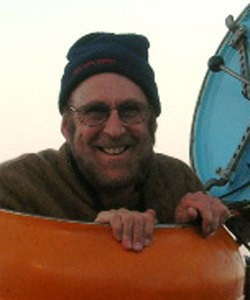The glacial Earth is a study in contrasts with modern interglacial conditions. Superb marine sedimentary records laid down during the last deglacial period and recovered from Ocean Drilling Program (ODP) sites off the coast of Southern California and in the surrounding ocean region provide ample evidence of the global environmental drama playing out in the oceans, on land, and in the atmosphere at that time. The magnitude of effects due to deglacial climate change are unexpectedly large and the period of change surprisingly brief. In the oceans, the associated turnover broadly affected the entire water column, its ventilation state and sediment carbon storage; profoundly large shifts in global ocean temperatures and decreased pressures resulting from lower sea levels appear to have destabilized seafloor methane hydrate reservoirs, and may have even activated seepage from shallow marine hydrocarbon reservoirs on continental margins. The last deglacial period was further punctuated by the abrupt Younger Dryas cooling event that occurred 12,900 years ago; convulsions associated with this event include the widespread and sudden extinction of North American megafaunas and the disappearance of the prehistoric Clovis culture. Holocene processes, in comparison, are relatively benign and often unrepresentative in style and magnitude to those of the Pleistocene. Dr. Kennett has participated in seven ODP legs (five as Co-chief Scientist) in the Antarctic to subtropical regions of the South Pacific, Atlantic, and the northeast Pacific.
LECTURE SCHEDULE
September 13-14, 2007: University of Alaska Fairbanks
January 31, 2008: California State University, Fresno
February 8, 2008: Tulane University
March 6, 2008: College of Wooster
March 28, 2008: University of Houston
April 7, 2008: University of Montana







